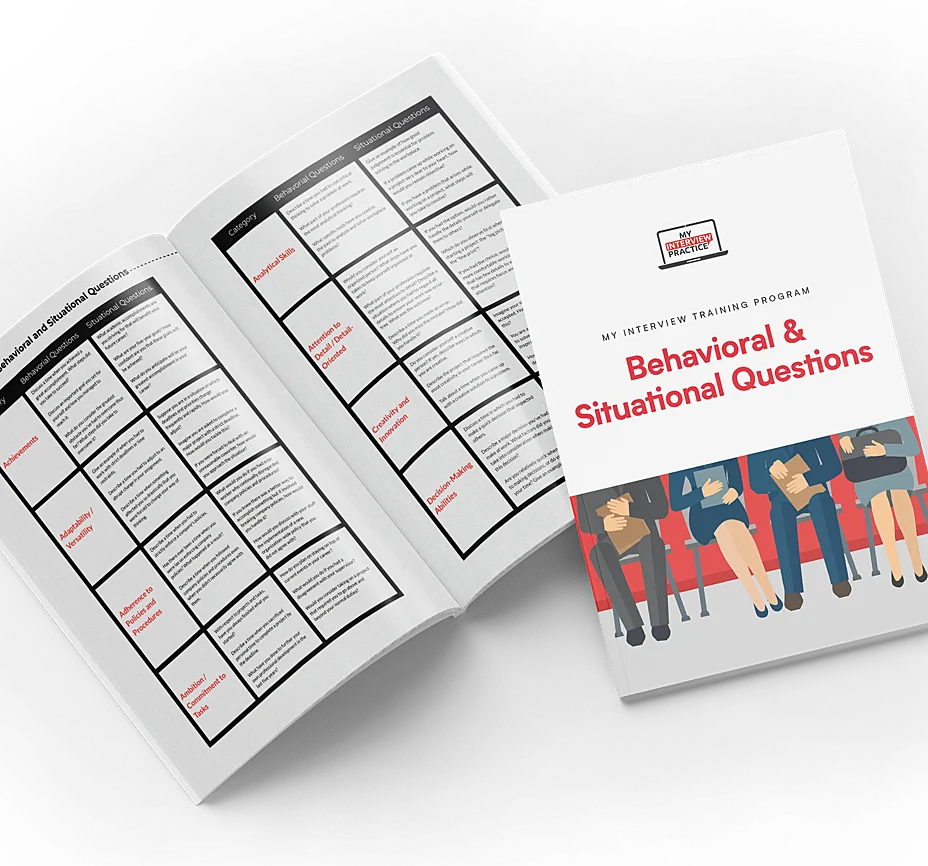 BACK
BACK
Ruby Developer Interview Questions
Ruby is a dynamic, object-oriented programming language known for its readability and efficiency. Many developers favor it for building scalable web applications, especially when paired with the Ruby on Rails framework. Companies hiring Ruby developers look for strong technical skills, problem-solving abilities, and a deep understanding of best practices for writing clean, maintainable code.
If you’re preparing for a Ruby developer interview, expect a mix of conceptual and hands-on coding questions. You’ll be evaluated on your familiarity with Ruby’s syntax, libraries, and performance optimization techniques. Below are some of the most commonly asked interview questions to help you practice and refine your responses.
Ruby Developer Interview Questions
1. What are the advantages of using Ruby for web development?
This question helps interviewers gauge your understanding of Ruby’s strengths and why it's a preferred language for certain applications.
Example Answer
"Ruby offers several advantages, including its simplicity, object-oriented nature, and an extensive set of built-in libraries. It emphasizes convention over configuration, reducing boilerplate code and increasing productivity. Additionally, the Ruby on Rails framework provides a structured way to build scalable applications quickly, making it a popular choice for web development."
2. Many developers describe Ruby as a ‘flexible’ language. Do you agree?
Flexibility is one of Ruby’s defining features. This question assesses your knowledge of how Ruby supports dynamic programming and metaprogramming.
Example Answer
"Absolutely. Ruby allows developers to modify existing classes, redefine methods, and even remove elements dynamically. This flexibility is useful for metaprogramming and extending functionality without altering core code. However, it should be used cautiously to maintain code readability and prevent unexpected behavior."
3. What are some key features of Ruby that set it apart from other programming languages?
This question tests your familiarity with Ruby’s core features and its differentiators compared to other languages like Python or Java.
Example Answer
"Ruby is a fully object-oriented language, meaning everything in Ruby, including numbers and methods, is an object. It supports dynamic typing, garbage collection, and mixins instead of multiple inheritance. It also features duck typing, which allows for more flexible code execution without requiring explicit type definitions."
4. What does it mean to ‘freeze’ an object in Ruby, and how is it done?
Freezing an object is a common operation in Ruby, and interviewers ask this to see if you understand how to maintain immutability when necessary.
Example Answer
"Freezing an object prevents modifications by making it immutable. This is done using the .freeze method. For example, if you freeze a string, attempting to modify it later will result in a runtime error. This feature is useful for protecting constant values from accidental changes."
5. What are the different types of variables in Ruby, and how are they used?
A fundamental question that tests your knowledge of variable scope and usage in Ruby programs.
Example Answer
"Ruby has four types of variables:
-
Global variables ($var) – Accessible throughout the program but generally discouraged due to potential side effects.
-
Instance variables (@var) – Available only within a specific instance of a class.
-
Class variables (@@var) – Shared across all instances of a class.
-
Local variables (var) – Limited to the method or block where they are defined."
6. Can you explain thread pooling and its impact on Ruby’s thread lifecycle?
Thread management is an important concept for optimizing application performance. This question evaluates your understanding of how Ruby handles concurrency.
Example Answer
"Thread pooling allows multiple reusable threads to be created and stored for use rather than creating new ones each time. This minimizes overhead and improves efficiency. In Ruby, threads execute concurrently within a process, but due to the Global Interpreter Lock (GIL), true parallel execution is limited. Thread pooling is particularly useful for handling multiple small tasks efficiently."
7. How does Ruby look up a method when it is called?
Understanding method lookup is crucial for debugging and writing efficient Ruby code. This question evaluates your knowledge of Ruby’s object model.
Example Answer
"When a method is called, Ruby first looks for it in the object's singleton class (if defined). If not found, it searches the object's class, then moves up the class hierarchy to parent classes and included modules. If the method is still not found, Ruby invokes the method_missing method, allowing developers to handle undefined method calls dynamically."
8. What are modules and mixins in Ruby, and how do they differ from classes?
This question tests your understanding of code organization and reuse in Ruby.
Example Answer
"Modules in Ruby are used to group related methods and constants without creating instances. Unlike classes, modules cannot be instantiated or subclassed. Mixins allow modules to be included in classes, providing a way to share behavior across multiple classes. This avoids issues associated with multiple inheritance while promoting reusable code."
9. What is unit testing in Ruby, and why is it important?
Testing is an essential part of software development. The interviewer wants to know if you understand Ruby's testing philosophy and best practices.
Example Answer
"Unit testing verifies that individual methods work as expected. In Ruby, we use frameworks like RSpec or MiniTest to write and run automated tests. Writing tests helps catch bugs early, ensures code reliability, and facilitates refactoring without breaking existing functionality."
10. How would you optimize a Ruby application for performance?
Performance optimization is critical in production environments. This question assesses your ability to identify and improve inefficient code.
Example Answer
"I would start by profiling the application using tools like benchmark, stackprof, or New Relic to identify bottlenecks. Optimizations could include reducing object allocations, using memoization, leveraging eager loading in ActiveRecord, and replacing slow loops with built-in Ruby methods like map or each_with_object. For database-heavy applications, indexing and caching strategies can also significantly improve performance."
11. What are Procs and Lambdas in Ruby, and how do they differ?
Understanding closures is important for writing functional Ruby code. This question tests your knowledge of how Ruby handles code blocks.
Example Answer
"Both Procs and Lambdas allow storing blocks of code to be executed later. However, they have key differences: Lambdas enforce argument count, while Procs do not. Lambdas also return control to the caller, whereas Procs return from the enclosing method when executed.”
12. What is RubyGems, and how is it used in Ruby development?
Package management is a fundamental skill for any Ruby developer. This question ensures you’re comfortable using Ruby’s dependency management system.
Example Answer
"RubyGems is a package manager that allows developers to install, manage, and distribute libraries (gems) in Ruby. It simplifies dependency management and version control. Gems are installed using gem install <gem_name>, and Bundler is often used to manage dependencies in projects by specifying them in a Gemfile."
13. How does garbage collection work in Ruby?
Memory management is crucial for application stability and performance. This question checks your understanding of Ruby’s automatic memory cleanup.
Example Answer
"Ruby uses mark-and-sweep garbage collection to free unused memory. When an object is no longer referenced, Ruby marks it for removal and later sweeps it from memory to reclaim space. Modern Ruby versions also use generational garbage collection to improve efficiency by focusing on short-lived objects, which are more common in applications."
14. How do you handle exceptions in Ruby?
Error handling is crucial for writing robust applications. This question evaluates your understanding of Ruby’s exception-handling mechanisms.
Example Answer
"In Ruby, exceptions are handled using the begin...rescue...end block. You can rescue specific exceptions using rescue StandardError => e or provide a generic rescue for all errors. Additionally, ensure can be used to execute cleanup code, and raise allows you to trigger custom exceptions. If the text doesn’t need modification, using a symbol is more efficient than a string."

The Smarter Way to Prepare
Experience a smarter way to prepare with our interview simulator.
15. How does ActiveRecord handle database interactions in Rails?
ActiveRecord is a core component of Rails. This question assesses your familiarity with its ORM functionality.
Example Answer
"ActiveRecord is Rails' ORM that simplifies database interactions by abstracting SQL queries into Ruby methods. It follows convention over configuration, allowing developers to perform CRUD operations using intuitive methods like User.find(1), User.where(name: 'Alice'), or User.create(name: 'Bob'). ActiveRecord also supports associations, validations, and migrations, making database management seamless."
16. What are callbacks in Rails, and when would you use them?
Callbacks help automate actions within models. The interviewer wants to know how you leverage them effectively.
Example Answer
"Callbacks in Rails are lifecycle hooks that trigger logic before or after specific model events. Common callbacks include before_save, after_create, and before_destroy. They are useful for tasks like data validation, logging, or triggering notifications.”
17. What is a scope in Rails, and how does it improve database queries?
Scopes help streamline database queries and make code more readable. The interviewer wants to assess your ability to write maintainable and reusable queries.
Example Answer
"A scope in Rails is a predefined method used to filter records in a database query. Instead of writing the same conditions repeatedly, scopes allow developers to define them once and reuse them throughout the application. This improves readability, minimizes duplication, and makes complex queries easier to manage. I use scopes to keep my ActiveRecord queries efficient, ensuring that filtering logic remains consistent across the application."
18. How do you implement background jobs in Rails?
Background jobs allow long-running processes to be handled asynchronously, improving application performance. The interviewer wants to see if you understand how to offload tasks efficiently.
Example Answer
"Background jobs are essential for handling tasks that don’t need to be processed immediately, such as sending emails, processing large datasets, or making API requests. In Rails, I use Active Job, which provides a common interface for job processing, allowing easy integration with tools like Sidekiq or Resque. This ensures the main application remains responsive while heavy tasks run in the background. By queuing non-urgent tasks, I improve both performance and user experience."
19. How would you secure a Rails application against common vulnerabilities?
Security is a crucial part of web development. This question assesses your knowledge of Rails security best practices and your ability to prevent common threats.
Example Answer
"Securing a Rails application starts with preventing vulnerabilities like SQL injection, cross-site scripting (XSS), and cross-site request forgery (CSRF). I ensure user input is properly sanitized, use parameterized queries to protect against injection attacks, and enable built-in security features like CSRF tokens. Additionally, I avoid storing sensitive credentials in code, opting for environment variables instead. Keeping dependencies updated and applying the principle of least privilege also help mitigate security risks. By following these best practices, I ensure the application remains secure and resilient against potential attacks."
A word of warning when using question lists.
Question lists offer a convenient way to start practicing for your interview. Unfortunately, they do little to recreate actual interview pressure. In a real interview you’ll never know what’s coming, and that’s what makes interviews so stressful.
Go beyond question lists using interview simulators.
With interview simulators, you can take realistic mock interviews on your own, from anywhere.
My Interview Practice offers a dynamic simulator that generates unique questions every time you practice, ensuring you're always prepared for the unexpected. Our AI-powered system can create tailored interviews for any job title or position. Simply upload your resume and a job description, and you'll receive custom-curated questions relevant to your specific role and industry. Each question is crafted based on real-world professional insights, providing an authentic interview experience. Practice as many times as you need to build your confidence and ace your next interview.
| List of Questions |
In-Person Mock Interview |
My Interview Practice Simulator |
|
|---|---|---|---|
| Questions Unknown Like Real Interviews | |||
| Curated Questions Chosen Just for You | |||
| No Research Required | |||
| Share Your Practice Interview | |||
| Do It Yourself | |||
| Go At Your Own Pace | |||
| Approachable |
The My Interview Practice simulator uses video to record your interview, so you feel pressure while practicing, and can see exactly how you came across after you’re done. You can even share your recorded responses with anyone to get valuable feedback.
Check out My Interview Practice
Positions you may be interested in
Get the free training guide.
See the most common questions in every category assessed by employers and be ready for anything.
Get the Guide


